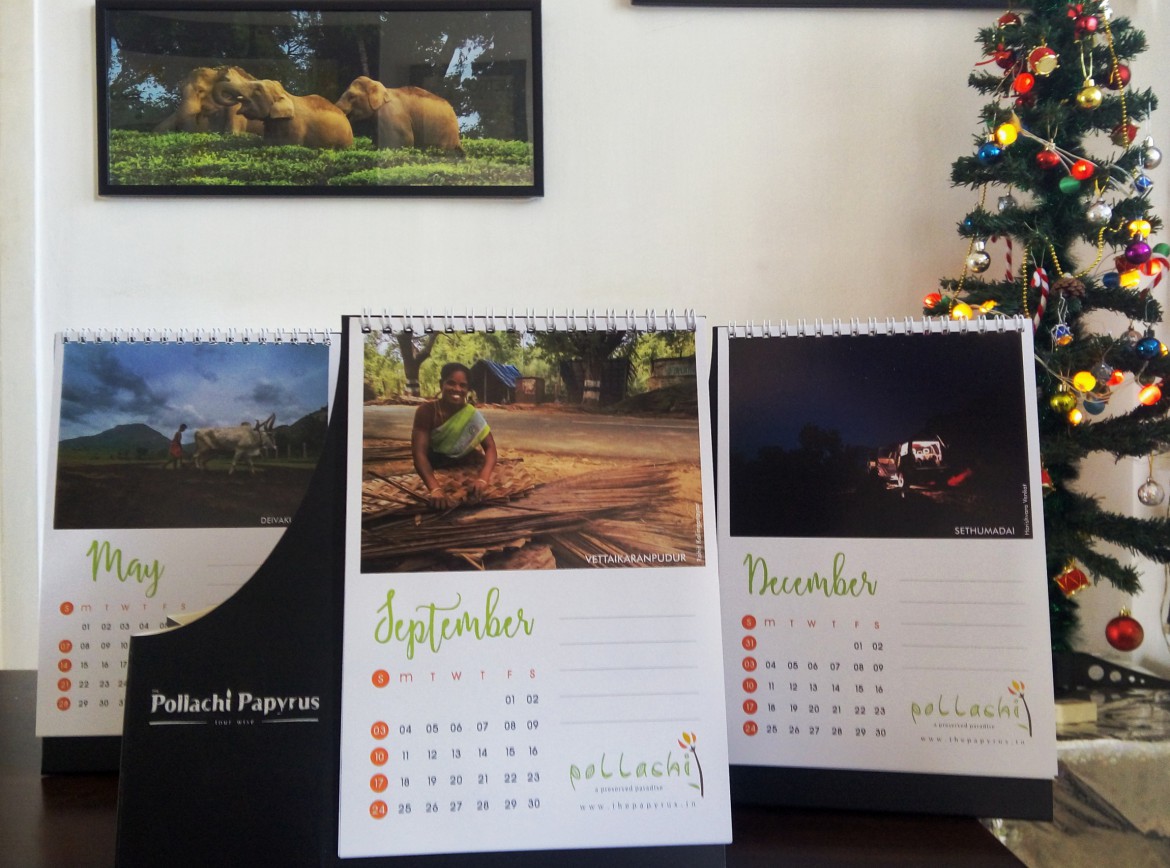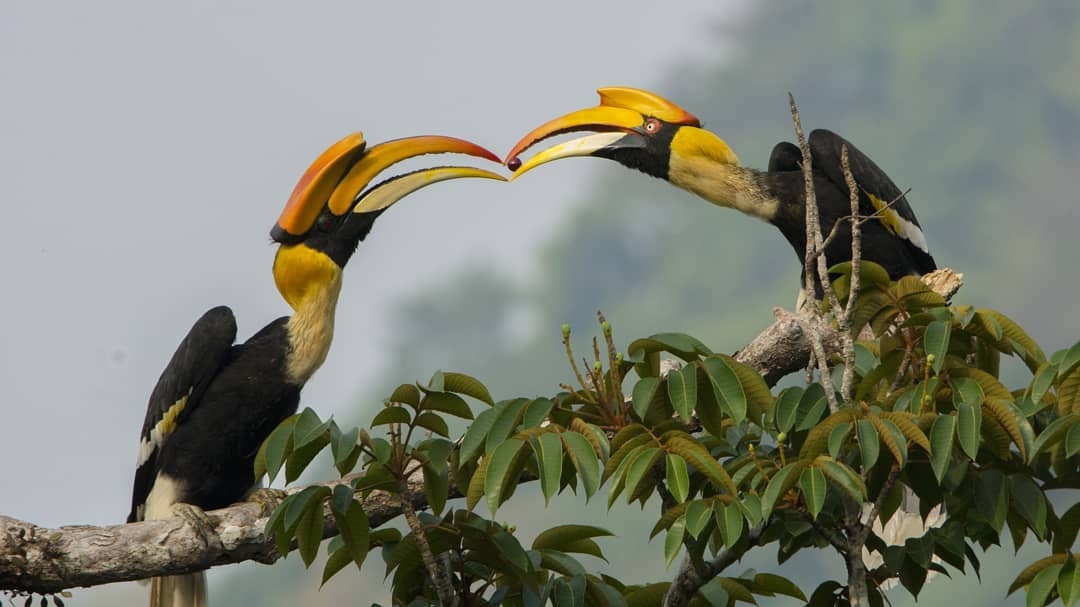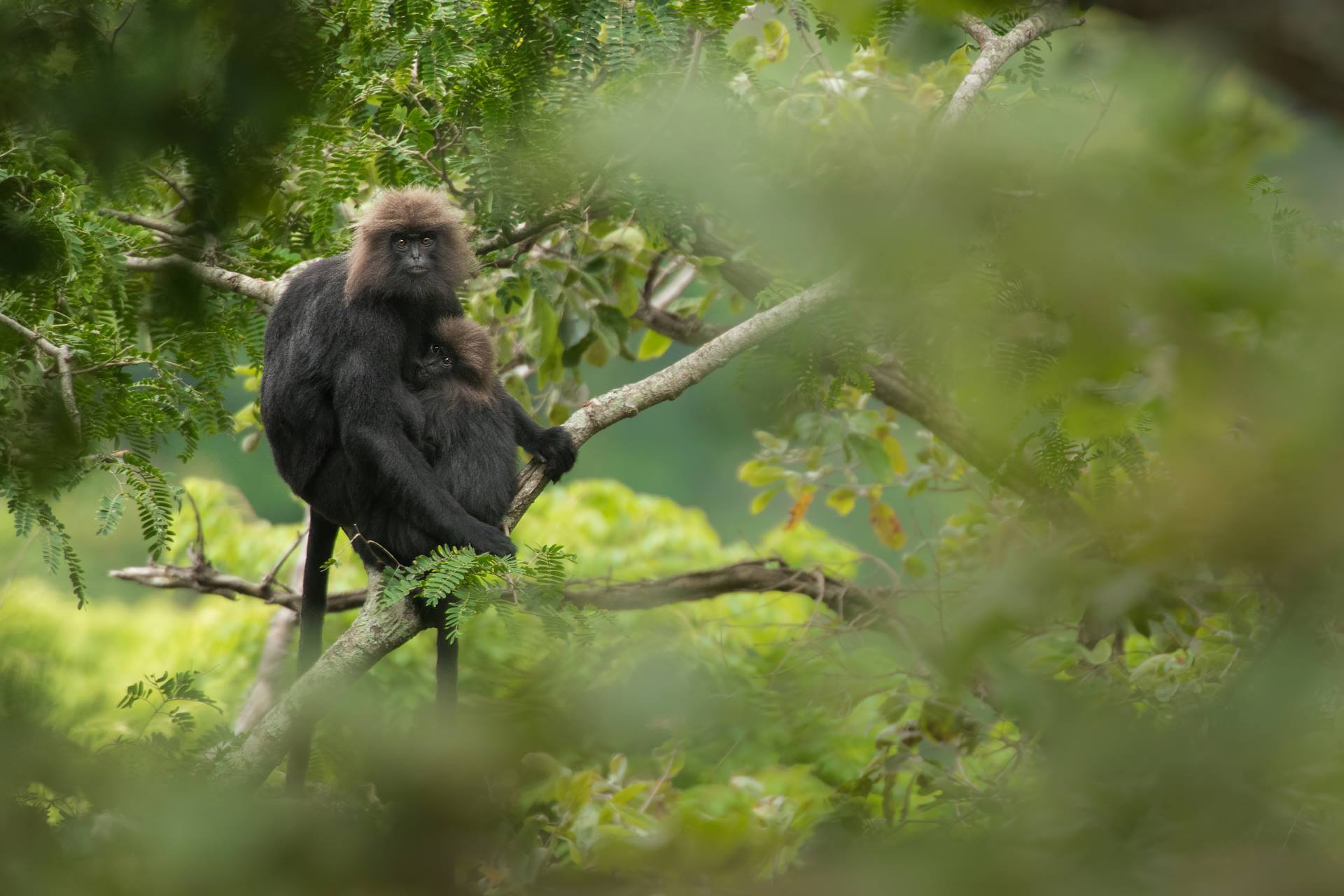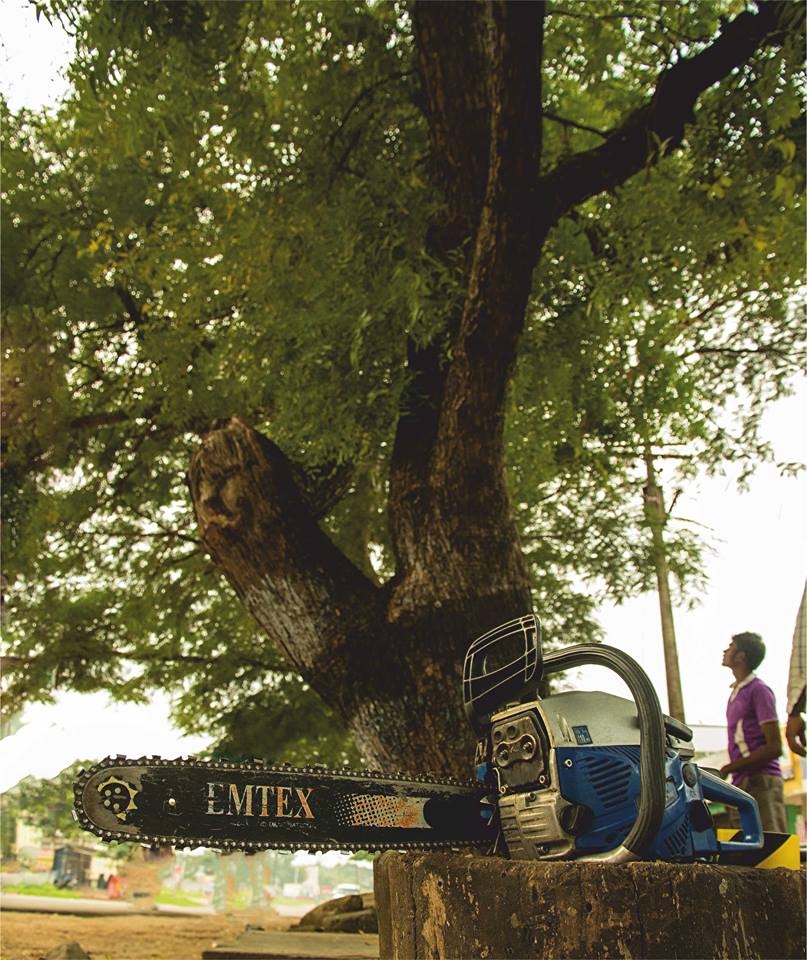Travel has a transformative power. Promoted responsibly, tourism not only gives the traveler a taste of profound fulfillment but helps sustain livelihoods, support local communities and conserve the natural and cultural heritage of the region.
At The Pollachi Papyrus, we advocate Responsible Tourism through an exciting world of new travel opportunities in the unexplored havens of Pollachi and the Anamalais. 2017, as declared by United Nations is International Year of Sustainable Tourism and this desktop calendar designed by Tungsten Creative, features exclusive images from the Pollachi region and will inspire you to plan your travel to this bio-diversely rich and culturally vibrant part of India.
Order your copy here – https://www.instamojo.com/pollachipapyrus/pollachi-desktop-calendar-2017/
January –
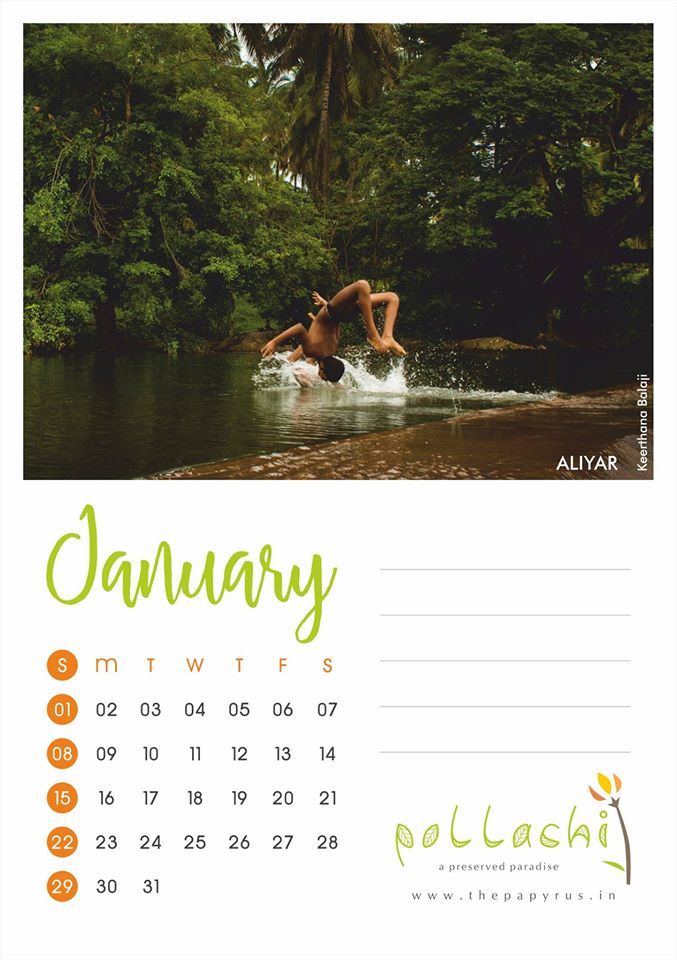
A walk through a quaint little village set on the banks of the Aliyar River, is an amazing way to witness life by the riverside. An evening walk along the banks, complimented by the breeze of cool winds and idyllic landscapes sculpted by a wonderful tapestry of colours that change every passing minute, calls for a unique experience of perfect union with Nature.
February –
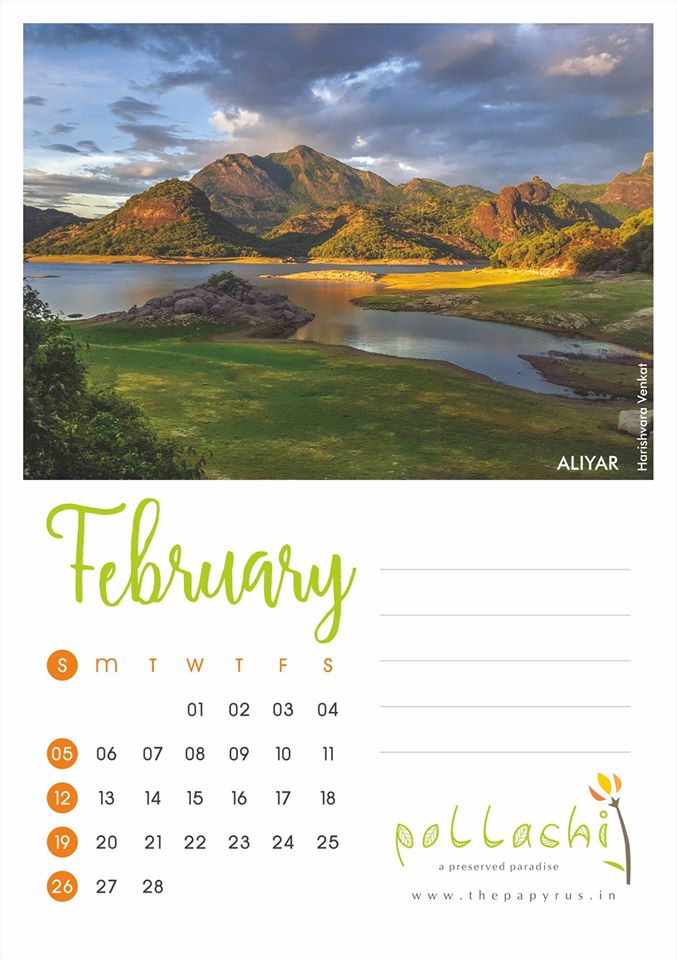
Located in the foothills of Anamalai Tiger Reserve, the dam offers panoramic views with tall, blue mountains on one side and lush green coconut farms on the other, creating a haven that stands in harmony with an island in the middle of the lake, which is completely enthralling and captivating.
March:

Valparai Range of Anamalais is situated at an altitude of 3500 feet above the sea level. Interspersed by lush green rainforests and tea plantations, the region is a rich bird watching tract and one of the main strongholds of Great Hornbill populations in the world. Spending time amidst the undulating tea slopes of tea plantations, tall blue mountains and forest patches, it is the perfect getaway, you’ve always dreamed of as bird-watcher.
April:
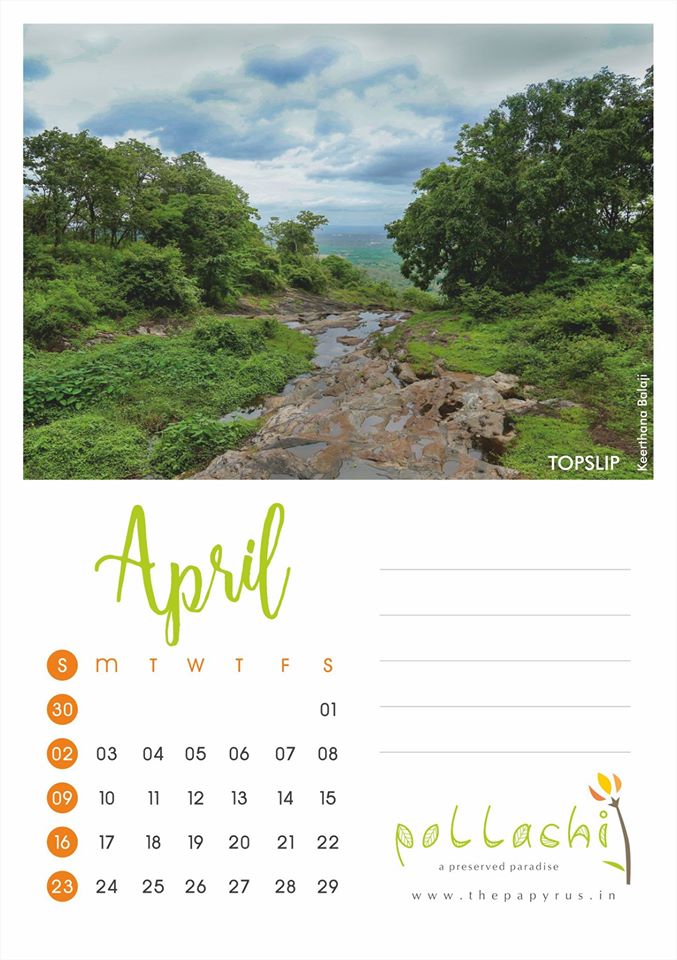
An ecological paradise, TopSlip is an erstwhile National Park that is now part of the Anamalai Tiger Reserve and is home to more than 250 species of birds with the diverse habitats that are found here. The Monsoon days here are magical when the rain clouds cast their spell over the bio-diverse, rich forests and the landscape turns lush green and life abounds in various forms.
May:
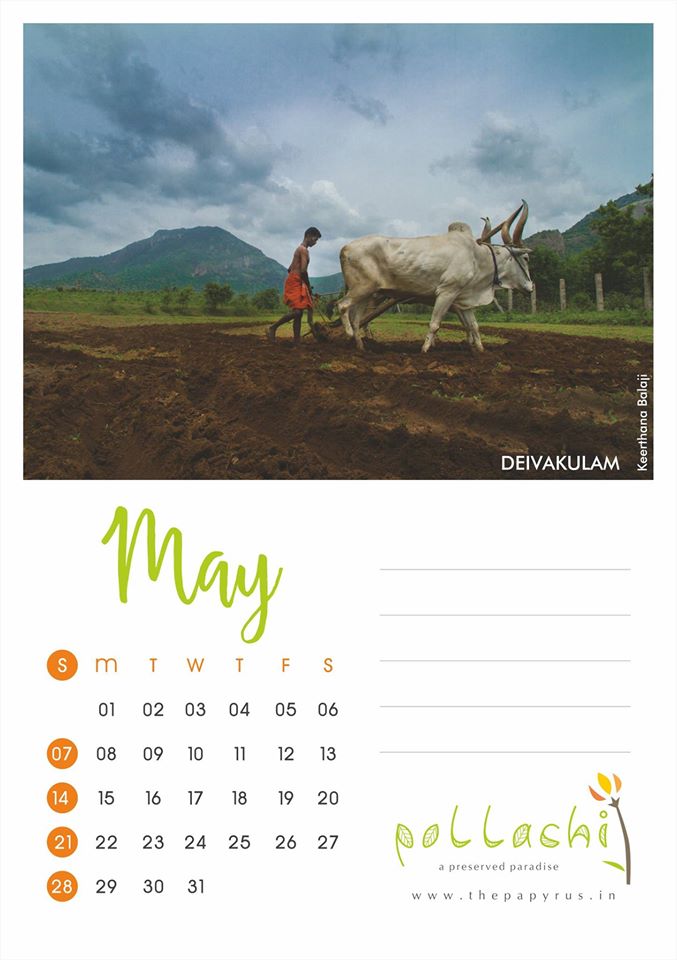
The entire scenario changes during the Monsoon in Sethumadai. One shower is enough for the dry brown mountains to take on a greenish hue, and the dusty canal roads to fill up with small puddles. As for the farmer, he gets ready to plough his wet field as the season has arrived to sow his rain-fed crops such as groundnuts and corn for a bountiful harvest.
June:
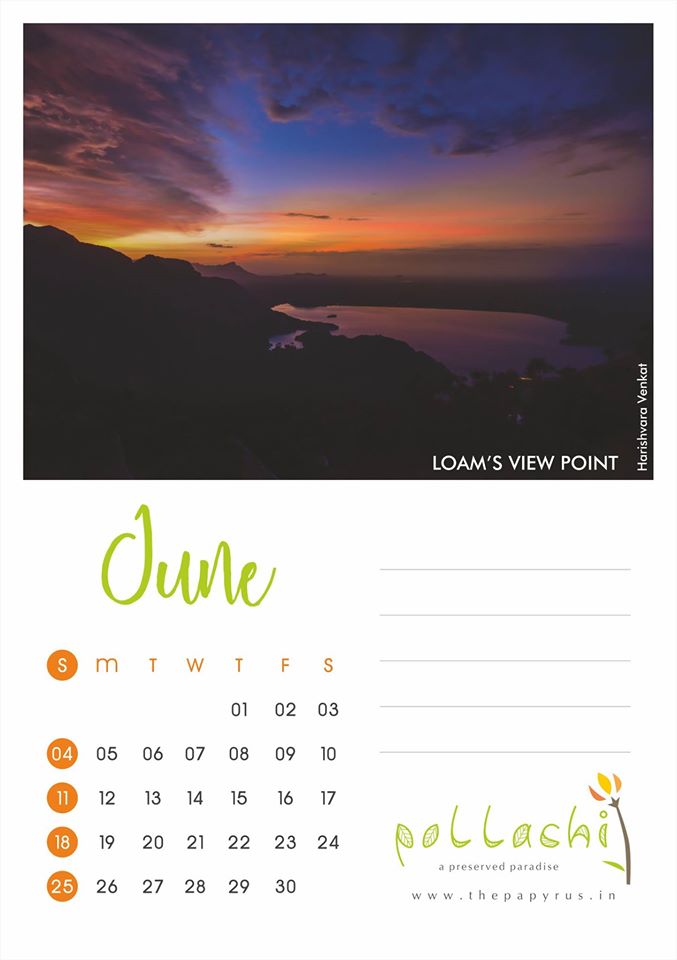
It’s all about a change of scenery in Pollachi during the Monsoon days. Once the Monsoon rains arrive, there’s freshness in the air and a lush green carpet spreads below. It’s time for the rejuvenated colors of Pollachi and the Anamalais to shine in the monsoon hues. With the sky emerging clear and blue, the trees taking on yellow, amber and scarlet hues, one can feast their eyes on all the scenic beauty that Pollachi has to offer during these magical days.
July:
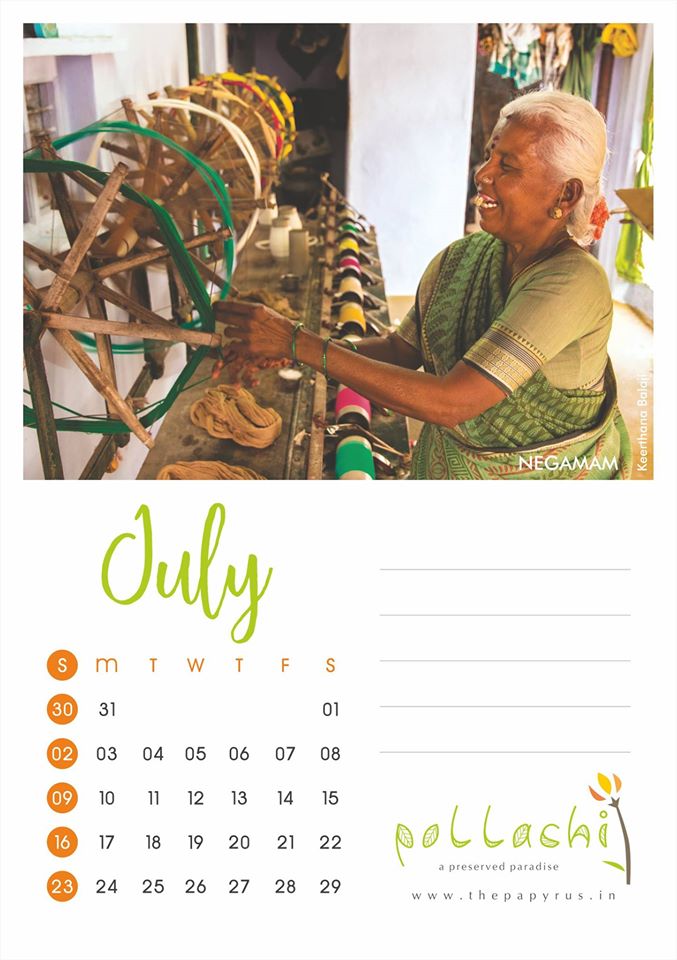
A village, with a strong and rich weaving tradition Negamam is the ideal destination for the Handloom weaving village experience where you can witness skillful artisans at work, who have perfected the art of weaving sarees using knowledge handed over many generations.
August:
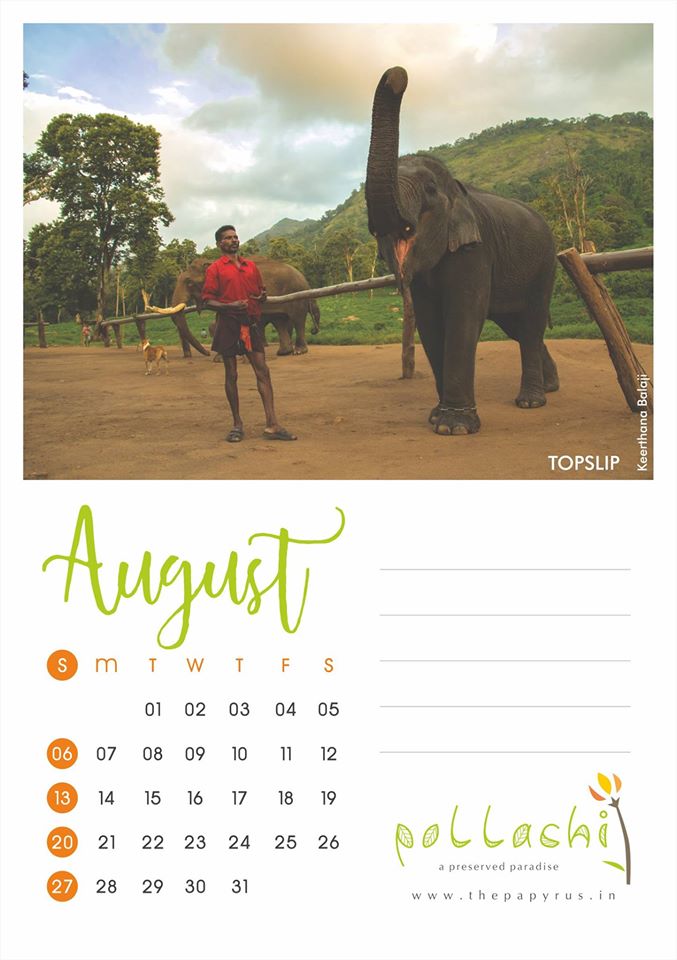
The Kozhikamuthi Elephant Camp is a small tribal settlement in the Ulaandy range of Anamalai Tiger Reserve, near TopSlip, that is exclusively used for captive elephants to be trained and disciplined under the native Malasar tribes, who possess specialized knowledge and skill to train and work with Asian elephants. In the evenings, the elephants are brought back to the camp by the mahouts (trainer) and are given a bath by the cavadies (assistants to mahouts). The elephants are later fed with a man-made diet that consists of ragi, horse gram, salt and jaggery. This usually takes place in front of the visitors and tourists.
September:
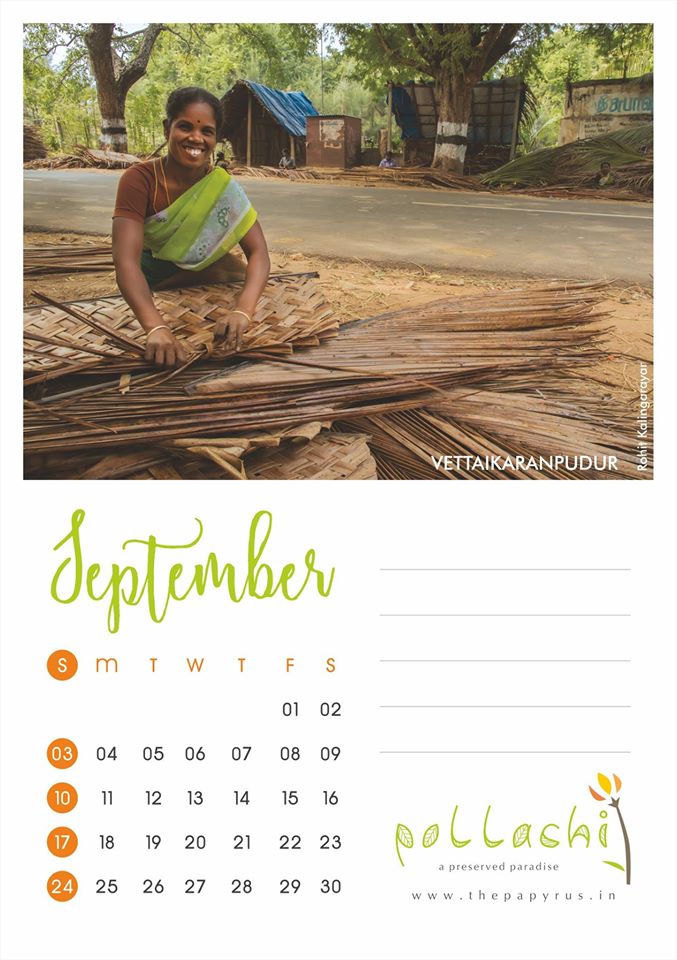
With the abundance of coconut trees in Pollachi, the fronds are woven and primary used for roofing in thatched houses. On the roadsides of Vettaikaranpudur enroute Sethumadai, you can see saree clad women skilfully split the whole palm frond and weave the individual leaves into each other until a sheet remains. These “sheets” are then layered over bamboo beams and tied down creating the roof.
October:
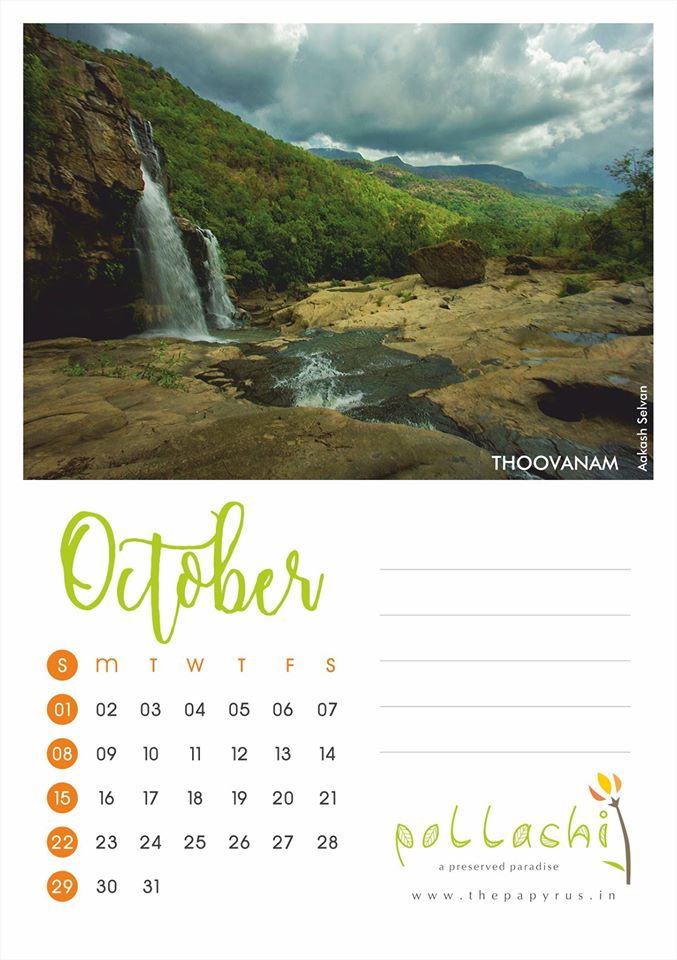
Soak yourselves in the divine bliss of the splendid Thoovanam falls when you trek alongside river Pambar that flows eastwards through the sanctuary, with its breathtaking silvery cascade . Upon reaching the luxurious waterfall, that spreads over 100 meters in width, you can dive into the pristine, energetic waters for a refreshing swim.
November:
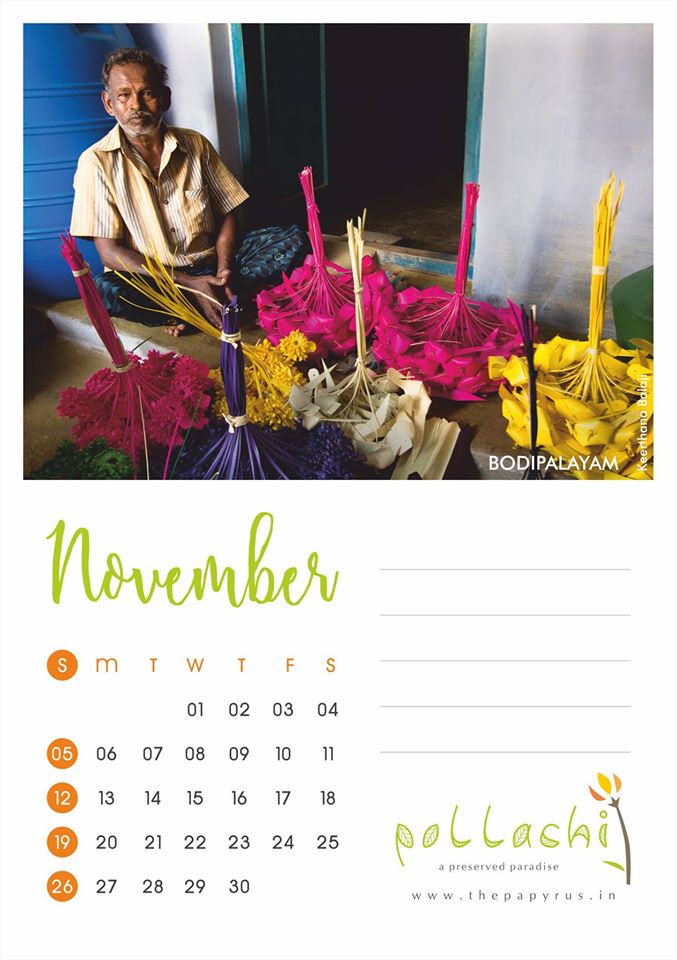
The rustic, rural trails of Uthukuli will lead you to Bodipalayam where the magical hands of artisans work deftly on palm leaves to create beautiful work of art in a jiffy. Colourful parrots, fishes, flowers and torans which are used as decors for festive occasions and marriages by the zamins of the villages carry their stamp.
December:
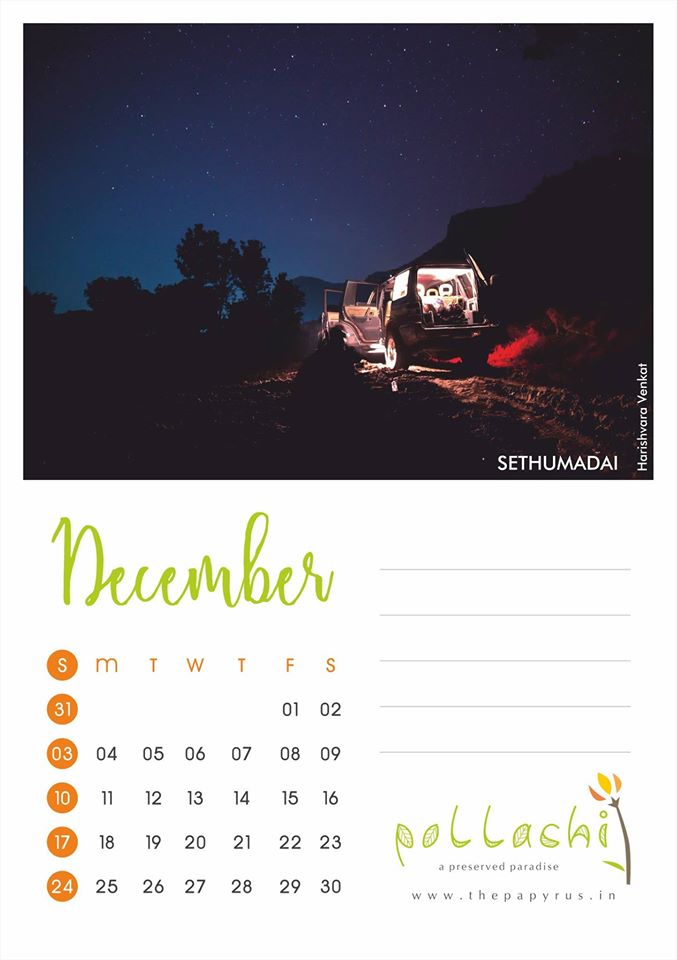
Spending time in the outdoors, experiencing its raw wilderness, instils a sense of humility that one can seldom feel anywhere else. Sethumadai and its exotic private farmlands that are bordered by the wilderness of Anamalai Tiger Reserve, offers just that. If you are staying in a resort at Sethumadai, you can venture out to the farmlands nearby and spent the night star-gazing, exploring and witnessing the infinite beauty of the clear skies, away from the city glow.
So, this New Year come, seek new landscapes, explore new horizons and cover new grounds, all while experiencing the transformative power of travel.
Order your copy here – https://www.instamojo.com/pollachipapyrus/pollachi-desktop-calendar-2017/

